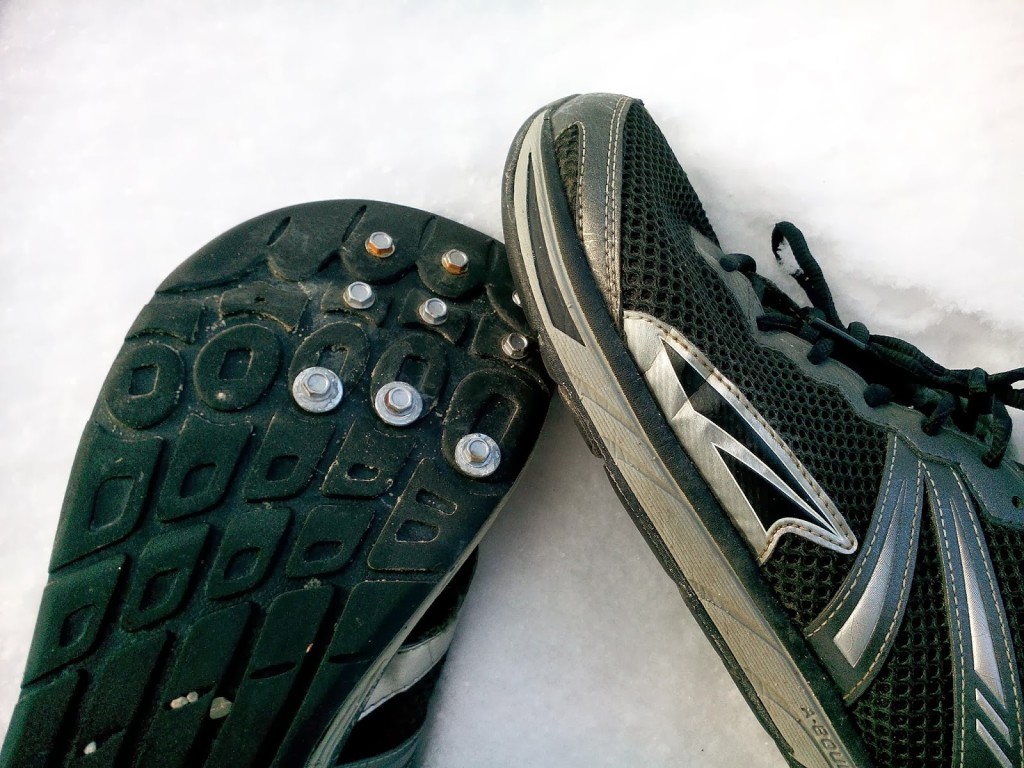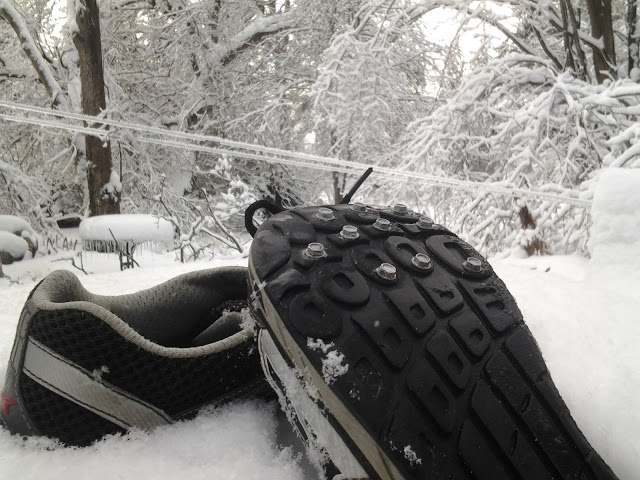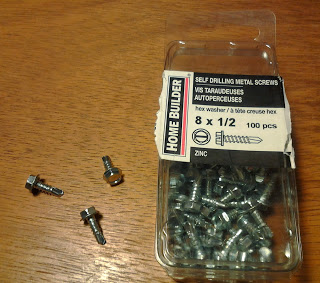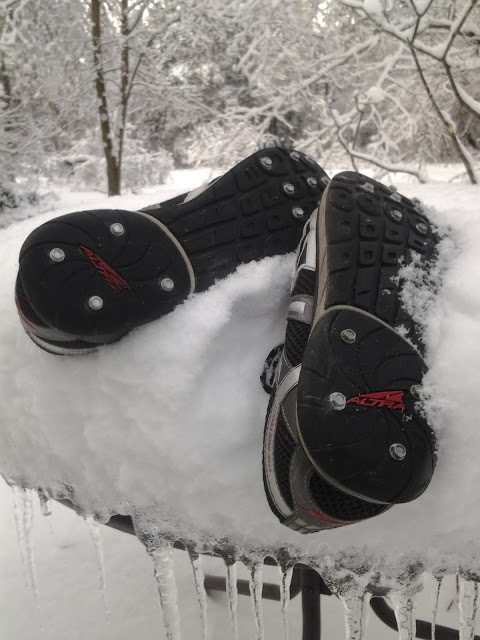 |
| The Great Ice Storm of 2013, Fergus, Ontario. |
- Self-tapping half or quarter inch hex head sheet metal screws (say that 10 times fast!), available at most hardware stores. Any head size will do. You will need anywhere from 4-20 per shoe.
- A pair of running shoes with fairly rigid soles and high stack height (look for lots of carbon rubber and high density foam)
- A socket driver/multi-bit screwdriver
- An extra pair of insoles (optional)
- Washers (optional)
Overpronators may find best results with more screws along the inside of the sole (like my shoes below), while underpronators may want more along the outside. In either case, position screws in a reasonably symmetrical pattern about the long axis of the shoe to avoid canting the footbed to one side, which could cause injury. For a light snowfall you may only need a few screws in the forefoot, but for an ice storm you can’t have too many!
Since installing and removing the screws takes a few minutes and I like to be lazy efficient, I convert one pair of shoes in my rotation for the winter. These shoes significantly enhance grip on ice, slush and light snow and they don’t feel too awkward on pavement. They’re my go-to shoes for mixed surface winter runs.
 |
| Update: Screwy Shoes v2. I added washers under the ball of the foot to increase clearance and reduce pressure points. |
Yaktrax
Overshoe traction devices such as Yaktrax are a popular option for winter running. As of December 2013, Yaktrax has three models suitable for running: Walk, Pro and Run, each available in four sizes. The Walk uses steel coils held in place by a stretchy rubber web, the Pro adds a velcro strap over the toe, and the Run features replaceable carbide spikes in the forefoot.
I’ve owned all three models and would recommend Yaktrax to any winter runner/walker. The carbide spikes of the Run provide a little more confidence in icy conditions, but the steel coils of the other models are more than enough for most conditions. I recommend buying either the Walk or the Run, since the velcro strap of the Pro is not worth $10 extra. I find that the Walk stays in place quite well even without a strap (if properly sized), but I have found a few lost ones around town come the spring thaw. In any case, some velcro straps from a dollar/hardware/crafts store would be a cheap upgrade.
Here’s a comparison of screwy shoes and Yaktrax:
|
Screws
|
Yaktrax
|
|
|
Cost
|
$1-4
|
$20-40
|
|
Grip
|
★★
|
★★★
|
|
Feel
|
★★★
|
★★
|
|
Durability
|
★★
|
★★★
|
|
Notes
|
-few minutes to install/remove
-can create pressure points -unobtrusive on pavement -never fall out or need adjustment -not for minimalist shoes |
-easy to put on/take off
-can alter foot strike or gait -feel awkward on pavement -Walk model can fall off -not ideal for minimalist shoes |
In both cases, durability depends on the running surface. Avoiding asphalt/pavement will greatly increase the lifetime. Yaktrax typically last for a couple seasons while the screws wear down and become less effective after a few months of regular use.
Which option is best?
Serious winter runners should have both. Unless there has been a recent snowfall, the roads are rarely entirely covered. For these mixed surface days, screws are my choice. For very sloppy days, I reach for Yaktrax.
Get off the glorified hamster wheel and get outside!












